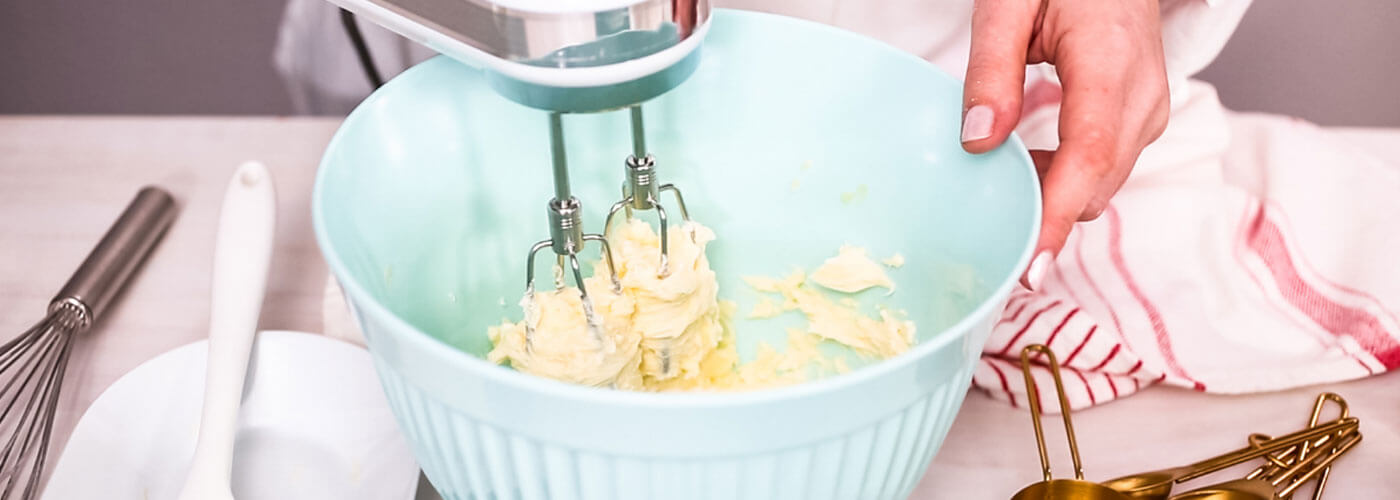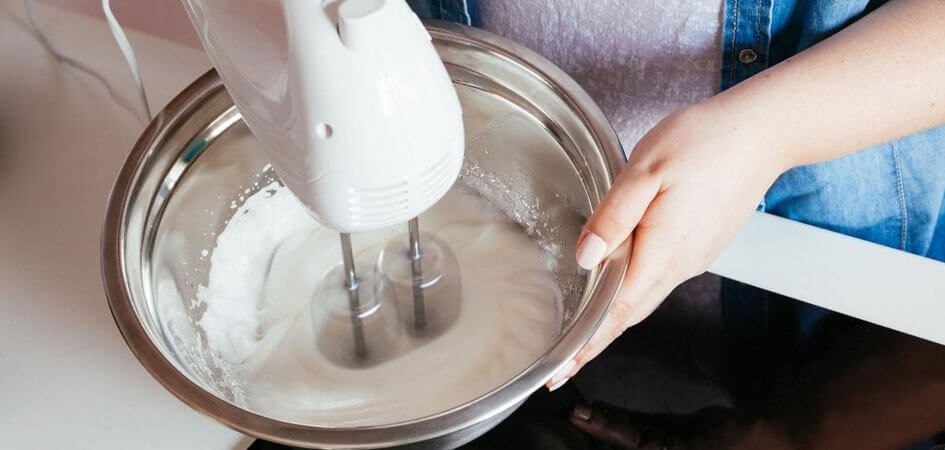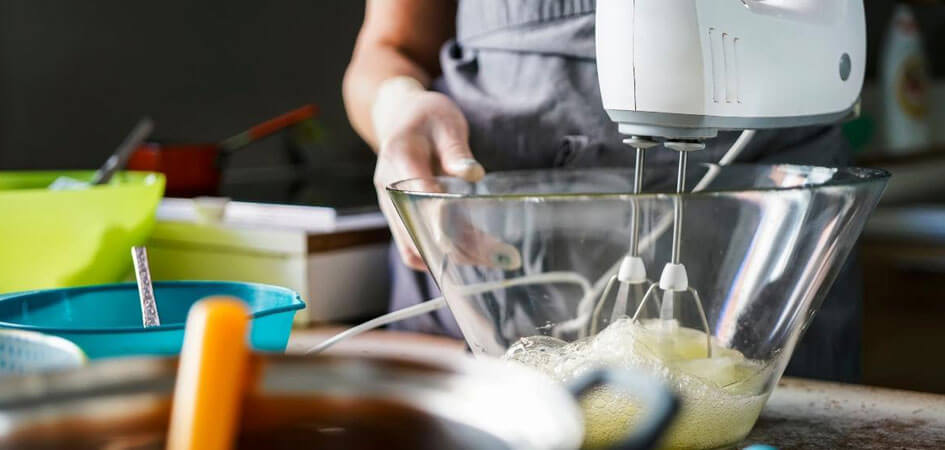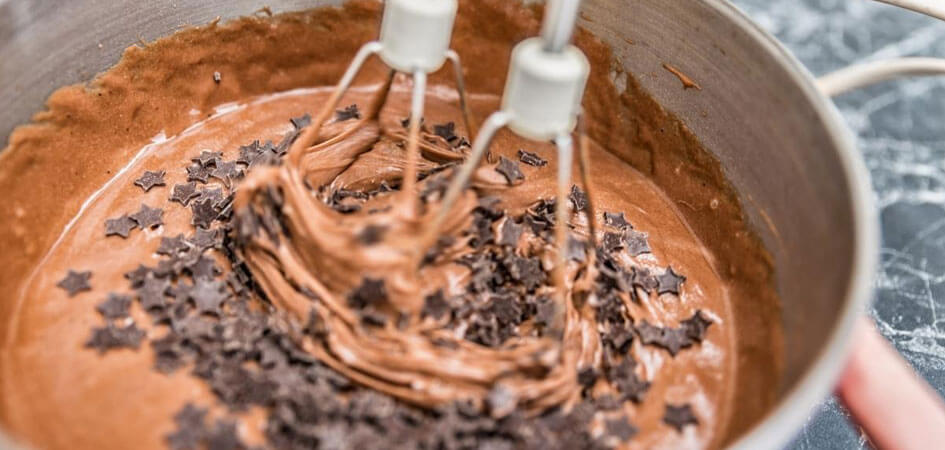

What is it?
Creaming is a very common method of mixing. When the fat is creamed properly, we get better tasting and quality texture for cakes and cookies. Here are some tips to get creaming done right!
First and foremost, you need soft butter to be able to allow the dough to take shape. Soft butter (at room temperature) has the quality of merging anything into it seamlessly. The word ‘cream’ reminds us of a smooth texture, doesn’t it? That’s exactly what the creaming method in baking teaches us.
Let’s follow the step-wise process for the same:

Step 1:
Like we said before, soft butter is a must. Remember, soft does not mean melted butter. This means you need to set the butter at room temperature at least 30-40 minutes in advance. Melted butter reacts very differently when mixed in a dough. This will not give you the results you wish for. You can try using the thumb test. When you press the butter, you should easily be able to imprint your thumb on it. This butter is now ready for some mixing!

Step 2:
Sugar also needs to be at room temperature. This is for bakers who prefer to refrigerate most of their baked goods. Ensure that the sugar is kept in a cool and dry place well before the creaming process begins!

Step 3:
Cream the butter and sugar until super light and fluffy. A stand mixer is ideal to break down the two ingredients entirely. To make the science simple, the cubes of the sugar will punch themselves into the soft butter creating air pockets which is what leads the dough to expand. You will notice the increasing volume and brightening in the colour of the dough. Mix from the sides of the bowl for even consistency.

Step 4:
Now, add the room temperature eggs to the mix. One by one, add the eggs and keep beating the mixture lightly. Cold eggs will completely ruin the mixture. In case you did forget to keep the eggs outside, add them to warm water for about 5-7 mins to warm them. Use a separate bowl to beat the yolks and whites just until they mix and become one colour. Do not over-beat.
Step 5:
Ensure all ingredients have merged well. There should be no scope for graininess. Now you can add your dry ingredients like flour, cinnamon etc. for cake or choco chips in case of cookies.
Once done, congratulate yourself as you have almost mastered the creaming process! Practise this once every day for a month, then weekly for a few months until you are super comfortable and at ease with the process!
